Kaj Steveman worked for over 30 years in the movie business. He started as a SFX makeup. There is 11 years old, he founded the studio Fido. Kaj has since overseen the effects of many films including FROSTBITTEN, LET THE RIGHT ONE IN or HOTELL GYLLENE KNORREN – FILMEN. In the following interview, he discusses his work on UNDERWORLD: AWAKENING.
What is your background?
Kaj Steveman, Creative Director & VFX Supervisor: I started in this business doing special make up fx some 30 years ago, when I began to experiment with make up in my parents kitchen. I soon went on to do effects for films that my friends made, not so different from the kids portrayed in SUPER 8 actually.
I went on to work at theatres and went on to the make up department at Sweden’s largest TV Broadcaster, SVT. At the age of 25 me and my friends produced our first Horror flick, EVIL ED, an homage to all the wonderful slashers we had seen when we grew up.
Eleven years ago I founded Fido together with a colleague, and right from the start we envisioned that Fido should combine digital and practical effects (prosthetics, animatronics etc) to create a strength that would make us stand out from the other shops in Scandinavia. We also decided to become strong in character design and photorealistic animals. Today I can safely say that we have managed to reach that goal. Fido is one of Scandinavia’s largest and most renowned animation- and vfx-studios, with clients all over the world.
How did Fido got involved on this show?
Kaj Steveman: Fido has worked with the directors of UNDERWORLD AWAKENING before, and we were approached early on to bid for another sequence in the film. Ultimately that sequence was awarded to a vendor in Canada, as far as we understand mostly because of the tax rebates that are applied there.
When the film started to get closer to final cut we were asked to bid for another sequence; the transformation and death of Dr Lane (played by Stephen Rea). Thanks to our track record in transformation scenes, quite similar to what they wanted here, we were awarded these shots.
How was the collaboration with directors Mans Marlind and Bjorn Stein?
Kaj Steveman: Our relationship with them goes way back and is very good. In this production they helped us with a substantial brief of their vision for the effects in the initial stage of our involvement. But on day-to-day basis during the production we mainly had contact with James McQuaide.
 |
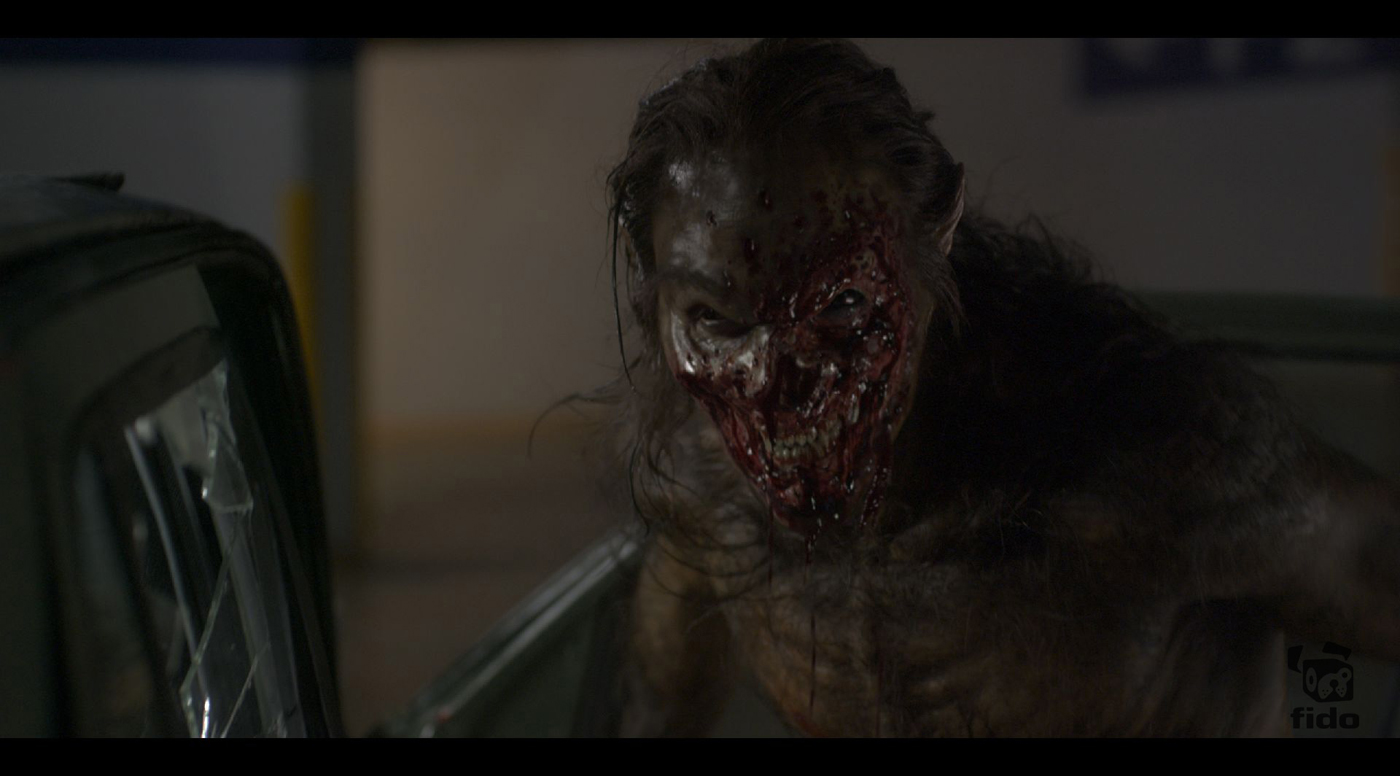 |
What was their approach about visual effects?
Kaj Steveman: The Underworld saga has a very distinct view on vfx; it has to feel physical, practical and real. In other words, everything that feels too much like CG is a big no-no. This legacy was very strong in this film as well, and this was a real challenge in some of our shots.
How was the collaboration with Production VFX Supervisor James McQuaide?
Kaj Steveman: Thanks to PIX, Skype and James McQuaide’s ability to work around the clock, we never ran into any serious communication problems even though we physically were on different sides of the world. Of course, in the beginning of a production like this, both sides have to get to know each other and trust must be earned. But we feel we got there pretty quick.
James gave us creative freedom to devise the concept for the transformations, and when we presented him with our ideas he liked what he saw. From then on, the production was indeed very smooth and done in an atmosphere of mutual respect and trust.
What have you done on this movie?
Kaj Steveman: The first sequence we were awarded was the transformation of Dr Lane (Stephen Rea), who turns into a mean Lycan hybrid monster character and has a fight with vampire girl Eve. Then we also did the death of the Hybrid after which he turns back to Dr Lane, a scene with some very graphic throat ripping shots.
And a few weeks into the production we were awarded yet another sequence. This time it involved a number of action shots from the fight between the hybrid and Eve, on which we added digital makeup on the hybrid.
Can you tell us in detail the creation of the transformation of Dr. Lane?
Kaj Steveman: When we got the job we immediately assembled a core team of creative artists, headed by me, Staffan Linder and Anders Nyman, and they soon devised an idea that would stand out from transformations seen in other films
Staffan Linder, animation supervisor: We wanted to avoid a classic linear transformation from A to B, and came up with a concept in which the character goes through a middle phase before becoming a fully developed hybrid. The general idea was to show how Stephen Rea’s human muscles first emaciated, making him shrink to a mummy looking character before the monster tissue and muscles’ growth turned him into the tall and muscular hybrid “man-in-suit” shot at the set.
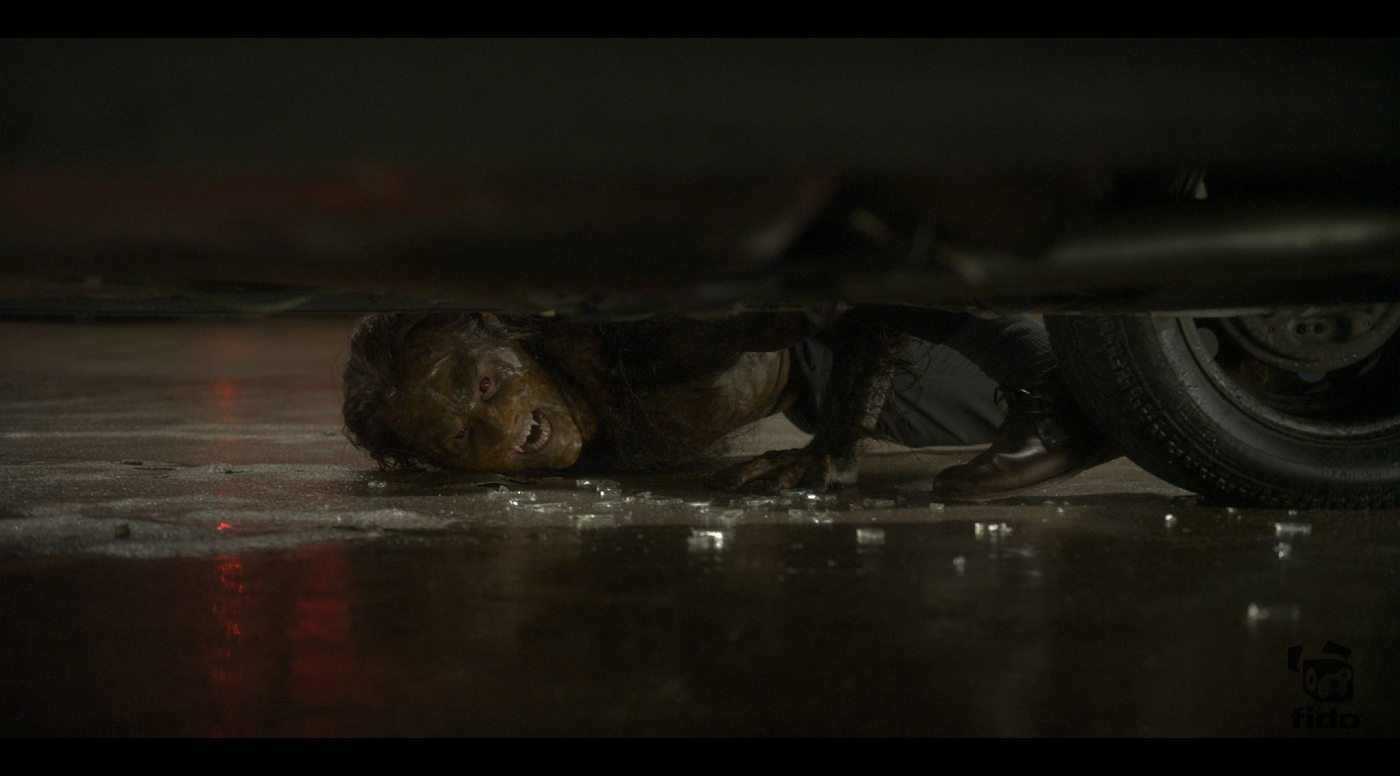 |
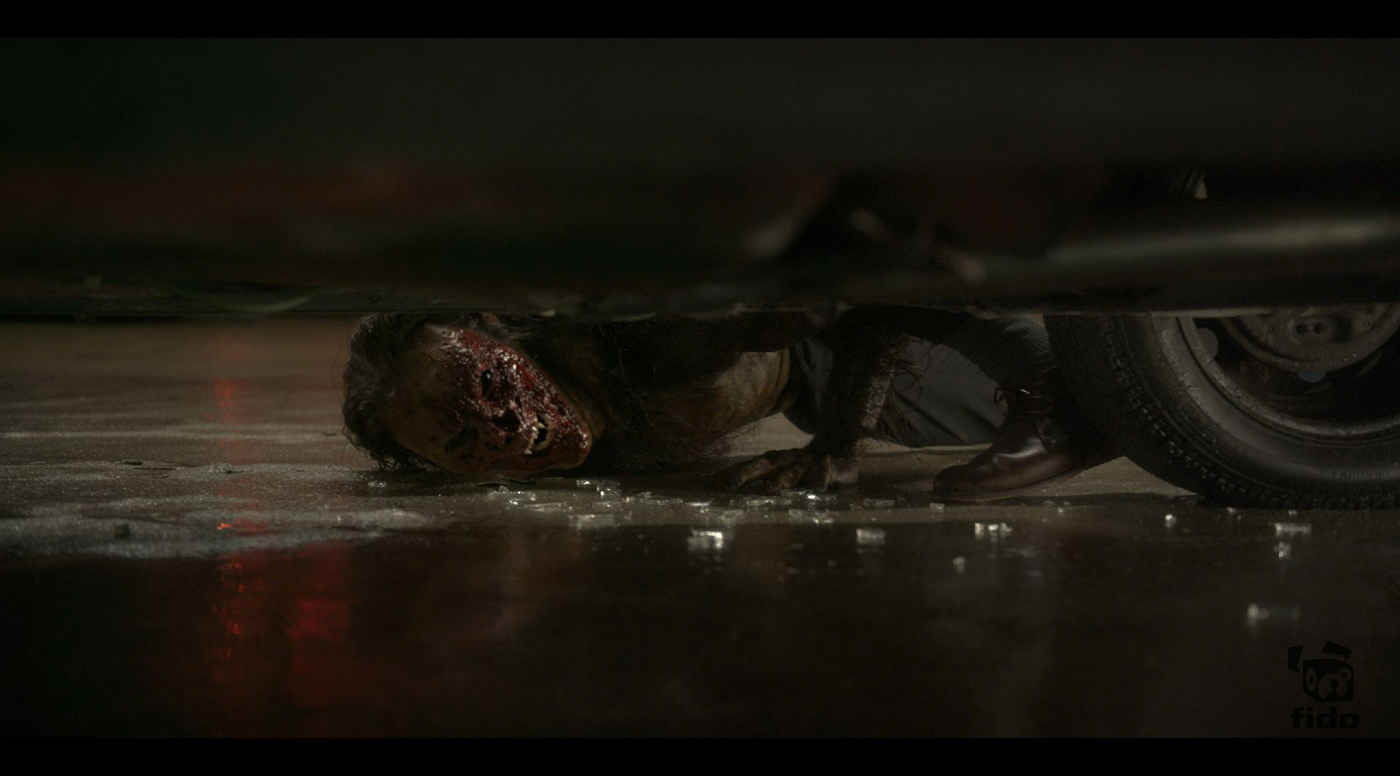 |
How did you create the digi-double for Dr. Lane?
Anders Nyman, VFX Supervisor: We received Cyber Scan assets of both Stephen Rea and the Hybrid. We then cleaned them up and added extra details. We rigged them with our automated rigging system, since we had too little time to device a more complex rig. Some of the facial animation had to be very close to the actors face so we opted for a combination using our facial setup with added deformers and joints, rather than our ordinary FACS-inspired facial setup built with blend shapes.
But in hindsight we probably would have had a smoother ride if we would have used a combination with our facial setup with added deformers. To create the in-between-phase of the transformation we sculptured a morph target of the shrivelled mummy like version of Dr Lane from the same topology, in Zbrush and with added texture done in Mari.
Did you enhance the makeup?
Kaj Steveman: We did indeed, especially since we were awarded the new fight shots.
They had shot the sequence with a stuntman made up as a hybrid, but had since realized that he wasn’t that scary looking. So they turned to us with an idea of adding a digital buck shot wound on the Hybrid’s face to make him more demonic.
Lakeshore had asked Luma (the main creator of vfx for the UNDERWORLD films) to make a concept design for the new face, and based on that Fido’s Magnus Eriksson created a suitably scary CG face. Anders Nyman and Peter Aversten then added all the gory details that made it truly convincing. As a final touch Staffan Linder added small animated flesh pieces that would dangle from the face, covered in blood.
Staffan Linder: All rotomation was done by hand, frame by frame to replicate the actors performance from the footage. Since the shots weren’t meant as vfx shots we didn’t have any tracking markers or other technical data to help us when we tracked the shots. But the team was up for the challenge and the result surpassed any expectations.
Can you tell us more about the gory end of the fight?
Kaj Steveman: Those shots were the first ones we started working on. There was a clear vision of how they would look, and they were shot with a piece of foam latex dipped in blood to act as a chunk of flesh (attached to the hybrid’s throat). When the vampire girl ripped it away, the blood was released. So some of the blood in this gory scene was there already on the plates. This real blood proved to be very good references for us, when we added the extra CG blood. The blood drenched chunk was painted away together with parts of his throat and face, and we then added the sculptured hole in the throat/chest, and the buckshot wound to his face.
Anders Nyman: The effect was quite astonishing and very convincing. You could almost smell the flesh and blood, and working with this asset sometimes made our stomachs turn. Occasionally we had to take a short coffee break and get some fresh air to be able to work on (laughs).
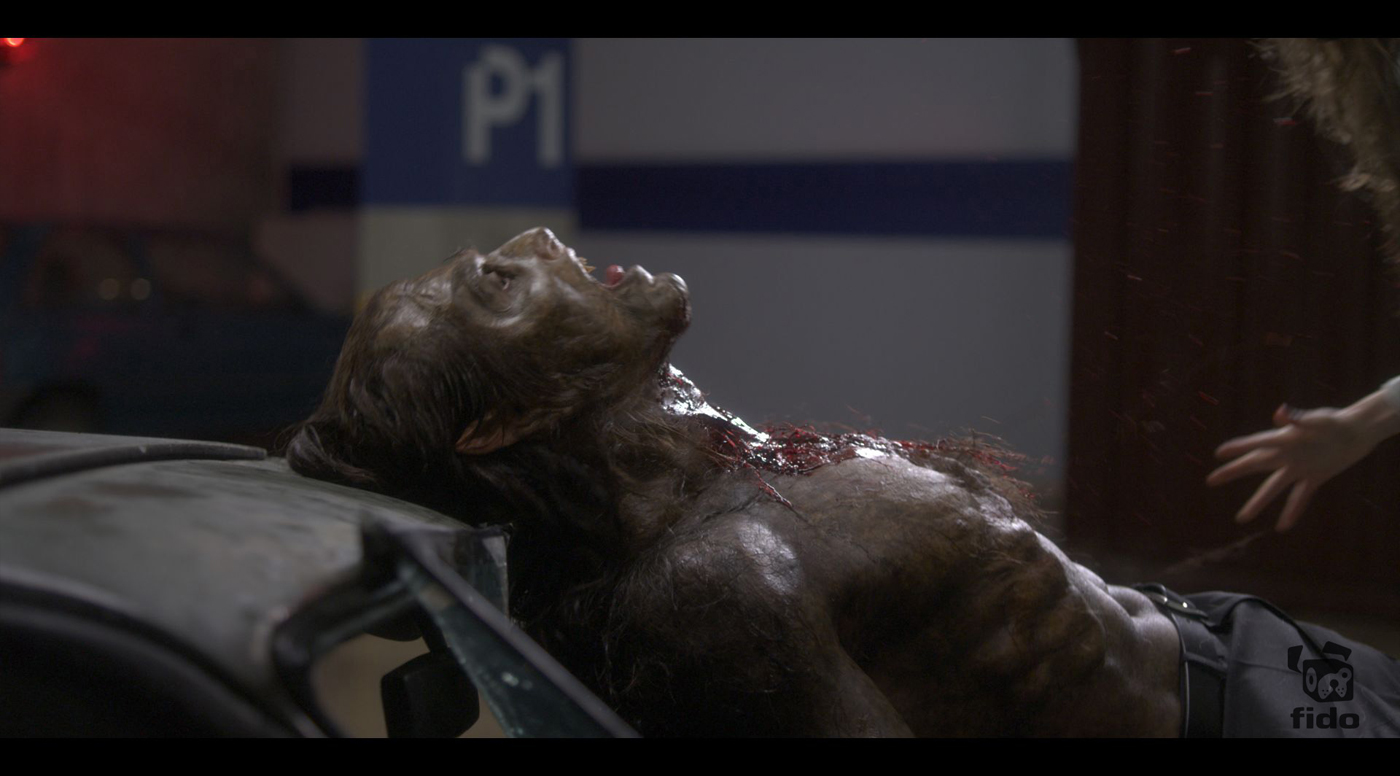 |
 |
How did you create the blood?
Kaj Steveman: The CG blood was created as animated texture in Mari, but in many ways this proved to be a rather complicated method. We had to work a lot on the timing and also patch quite a lot of it. We also made some blood simulations with propriety software SpeedSPH, our liquid solver.
Can you tell us more about the reverse transformation?
Kaj Steveman: The reverse transformation was something completely different from the first transformation. In these shots the hybrid dies, and thus turns into Dr Lane again not because he wants to – but because he’s loosing control and fading away from life. So since he is dying the transformation was designed more as a slow and rather linear “fade”, compared to the more powerful man-to-beast-transformation, and thus more difficult since it’s so much in your face.
Staffan Linder: As always we had to find some kind of physical logic in the scene, and went for the thought that the monster’s body can heal itself, to some extent. So the body actually starts to heal while he’s transforming back to human. But he dies before the healing process is over, and that’s why we end up with a dead Dr Lane who is still quite disfigured – but not as badly as when he was a monster. The reason for this was of course that it’s important to show the audience that it’s really him – Dr Lane – lying there. And with too much blood in his face he would have been unrecognizable.
Anders Nyman: We had originally planned to use much more of the real footage of Stephen Rea and the bodydouble. But due to many reasons we ended up using almost nothing of the real material. It’s only in the very last shot – when Dr Lane is dead – that we have used Stephen Rea’s real eyes and hair. Apart from that these shots are all CG, in all it’s gory splendor.
 |
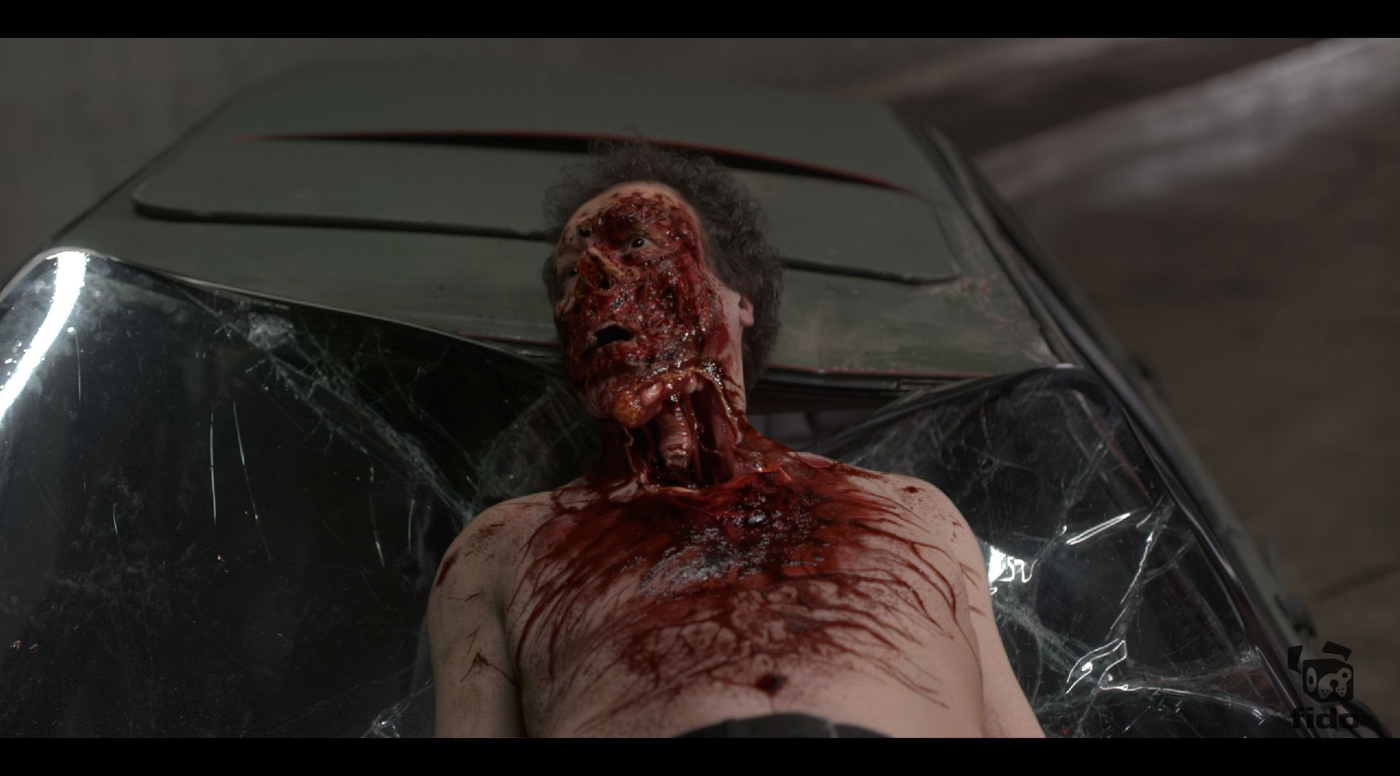 |
How did you manage the stereo aspect of the show?
Kaj Steveman: Working in stereo means that you can’t get away with things that work perfectly in 2D. It sure makes the job more complicated to have an extra dimension to deal with, but once you get the hang of it it’s really awarding. The hole in Dr Lane’s chest wouldn’t be half as gory without the stereo depth.
Staffan Linder: Fido had much needed experience with working on stereoscopic pictures, like our successful involvement in Sir David Attenborough’s acclaimed documentary FLYING MONSTERS 3D. It doubtlessly helped us a lot.
What was the biggest challenge on this project and how did you achieve it?
Kaj Steveman: Hard to say really, but of course the stereoscopic issues were troublesome sometimes. To match both eyes and of course the tracking of shots that had no tracking markers at all.
And it was of course quite a challenge to create a convincing CG replica of Stephen Rea. It’s one thing to create a fantasy character/creature, but to replicate an actor that the audience knows well is not an easy task. And how we managed? Well, we put lots and lots of hard work into it.
Was there a shot or a sequence that prevented you from sleep?
Kaj Steveman: Fido has grown steadily over the last couple of years, and today we have lots of in-house experience from many advanced productions. We use our own production pipeline- and an asset managements system called Ftrack, and this helped us to keep track of all the versions and different assets in this complicated production. It sure makes it easier to sleep at night when you feel that you’re in control.
So no, I can’t say there was a specific shot that kept us awake at night.
We were actually asked to do also another transformation sequence, but decided to pass on that one since we felt there wasn’t enough time left to deliver those shots in the high quality we always strive for. But if we had made those shots, then I’m sure I would have had many sleepless nights.
What do you keep from this experience?
Kaj Steveman: Looking back on the project we all feel it was great fun and a wonderful challenge. We’re all very proud of the result. And the production itself was also well planned and executed. But of course we made some mistakes on the way. For example, for some shots, we only did tracking on the actors and not the cameras. This sometimes gave us problems with blood simulations later in the production that we had not planned for in the beginning. It wasn’t a big thing, but it could have saved us some trouble if we had been more thorough from the start.
Staffan Linder: We also learned that you can achieve a lot even when shots aren’t meant as vfx shots. I’m of course thinking of the digital “buck shot” makeup, that we managed to pin there so convincingly that people think that the gory face is a practical effect. They don’t realize that it’s CG, and that’s about the best review you can get in this business.
How long have you worked on this film?
We started to work on it in September and delivered the last shots in December.
How many shots have you done?
26.
What was the size of your team?
20 people.
What is your next project?
Fido is currently working on KON-TIKI, the biggest Norwegian film ever produced. KON-TIKI is an epic drama about the great explorer Thor Heyderdahl’s legendary expedition to Polynesia in the 1940’s.
We’re creating all sorts of sea creatures as well as some really demanding ocean environment simulations. And as always, we’re working on numerous domestic and international commercials.
What are the four movies that gave you the passion for cinema?
Kaj Steveman: John Carpenter’s THE THING made a huge impact on me when it was released. It’s still one of my favourites. It’s so full of great ideas and was probably one of the main reasons why I started in this business.
Seeing BLADE RUNNER was also a turning point. The visual impact of that film is amazing. Ridley Scott redefined everything we thought we knew about the future. After that film all futuristic films adopted that same rainy noir steampunk retro style. The way he created a whole new visual universe was mindblowing.
POLTERGEIST. I became addicted to films very early, and was one of the first in Stockholm to have a VCR machine. So I saw lots of horror, naturally. POLTERGEIST was scary in a much smarter way than all those slashers. ILM’s fantastic vfx (all in camera) went under my skin, and the whole concept of turning an ordinary TV into something scary was brilliant.
Of course, Steven Spielberg’s films has always been an inspiration. CLOSE ENCOUNTERS OF THE THIRD KIND really affected me visually. The way he used light to create an out-of-this-world feeling was great.
A big thanks for your time.
// WANT TO KNOW MORE?
– Fido: Official website of Fido.
// UNDERWORLD: AWAKENING – VFX BREAKDOWN – FIDO
© Vincent Frei – The Art of VFX – 2012





very informative article on underworld
Good interview. The shots were amazing!